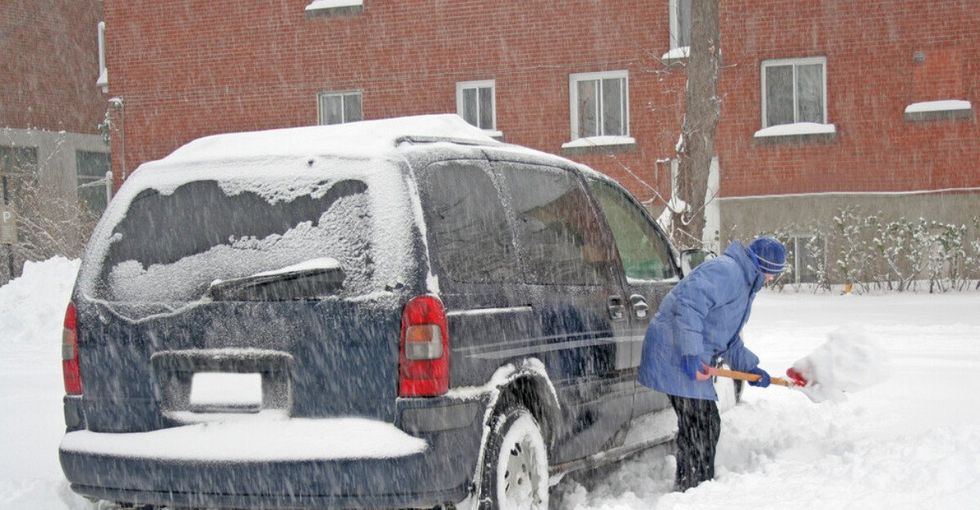Technology
Meteorologist Urges Quebec Drivers to Switch to Winter Tires Early

As winter approaches, Quebec drivers are reminded of the importance of switching to winter tires. While the legal deadline for installation is December 1, experts advise making the change sooner, even if road conditions remain dry. This guidance comes from meteorologist Peter Kimball of Environment and Climate Change Canada, who emphasizes that temperature, rather than snow, should be the primary consideration for this critical transition.
Temperature Matters More Than Snowfall
According to Kimball, winter tires provide enhanced performance at lower temperatures. “Snow isn’t the only factor that should determine when you put on your winter tires,” he explained. “Even if there’s no snow, winter tires perform much better once the temperature drops.” The rubber composition in all-season tires hardens in cold weather, causing a significant decrease in grip.
Kimball suggests that 7°C serves as a key threshold. Below this temperature, winter tires become substantially more effective than their all-season counterparts. “The colder it gets beneath that point, the larger the performance gap,” he stated. In Quebec, temperatures frequently drop below this threshold well before December. Last year, for instance, Montreal recorded a mean temperature of about 1.9°C on November 2 and 1.0°C on November 3, indicating that drivers may face challenging conditions earlier than expected.
Understanding Quebec’s Snow Patterns
Kimball also shared insights on Quebec’s average snowfall, which varies by region. In October, places like Saguenay typically receive around 8 centimeters of snow, while Montreal averages 1.8 centimeters. By November, snowfall becomes much more likely, with Saguenay seeing around 46 centimeters on average, Quebec City approximately 33 centimeters, and Montreal around 19 centimeters. This data indicates that most of Quebec will have its first significant snowfall during November.
Looking ahead to this year, Kimball noted that early conditions have been dry and relatively warm, with no significant snowfall expected soon. “The next substantial precipitation is likely to be rain around October 20, with potential flurries north of Montreal around October 24 or 25,” he said. The first major snowfall is anticipated in November, consistent with forecasts from MétéoMédia, which predict a sharp temperature drop around mid-November and warn residents of a sudden “weather shock.”
For drivers in Quebec, the message is clear: if you have not yet scheduled your tire change, it may be wise to act sooner rather than later to ensure safety on the roads. As temperatures decline, the performance of winter tires will become increasingly vital to maintaining control and safety during the harsh winter months.
-

 Education3 months ago
Education3 months agoBrandon University’s Failed $5 Million Project Sparks Oversight Review
-

 Science4 months ago
Science4 months agoMicrosoft Confirms U.S. Law Overrules Canadian Data Sovereignty
-

 Lifestyle3 months ago
Lifestyle3 months agoWinnipeg Celebrates Culinary Creativity During Le Burger Week 2025
-

 Health4 months ago
Health4 months agoMontreal’s Groupe Marcelle Leads Canadian Cosmetic Industry Growth
-

 Technology3 months ago
Technology3 months agoDragon Ball: Sparking! Zero Launching on Switch and Switch 2 This November
-

 Science4 months ago
Science4 months agoTech Innovator Amandipp Singh Transforms Hiring for Disabled
-

 Education3 months ago
Education3 months agoRed River College Launches New Programs to Address Industry Needs
-

 Technology4 months ago
Technology4 months agoGoogle Pixel 10 Pro Fold Specs Unveiled Ahead of Launch
-

 Business3 months ago
Business3 months agoRocket Lab Reports Strong Q2 2025 Revenue Growth and Future Plans
-

 Technology2 months ago
Technology2 months agoDiscord Faces Serious Security Breach Affecting Millions
-

 Education3 months ago
Education3 months agoAlberta Teachers’ Strike: Potential Impacts on Students and Families
-

 Science3 months ago
Science3 months agoChina’s Wukong Spacesuit Sets New Standard for AI in Space
-

 Education3 months ago
Education3 months agoNew SĆIȺNEW̱ SṮEȽIṮḴEȽ Elementary Opens in Langford for 2025/2026 Year
-

 Technology4 months ago
Technology4 months agoWorld of Warcraft Players Buzz Over 19-Quest Bee Challenge
-

 Business4 months ago
Business4 months agoNew Estimates Reveal ChatGPT-5 Energy Use Could Soar
-

 Business3 months ago
Business3 months agoDawson City Residents Rally Around Buy Canadian Movement
-

 Technology2 months ago
Technology2 months agoHuawei MatePad 12X Redefines Tablet Experience for Professionals
-

 Business3 months ago
Business3 months agoBNA Brewing to Open New Bowling Alley in Downtown Penticton
-

 Technology4 months ago
Technology4 months agoFuture Entertainment Launches DDoD with Gameplay Trailer Showcase
-

 Technology4 months ago
Technology4 months agoGlobal Launch of Ragnarok M: Classic Set for September 3, 2025
-

 Technology4 months ago
Technology4 months agoInnovative 140W GaN Travel Adapter Combines Power and Convenience
-

 Science4 months ago
Science4 months agoXi Labs Innovates with New AI Operating System Set for 2025 Launch
-

 Top Stories2 months ago
Top Stories2 months agoBlue Jays Shift José Berríos to Bullpen Ahead of Playoffs
-

 Technology4 months ago
Technology4 months agoNew IDR01 Smart Ring Offers Advanced Sports Tracking for $169










